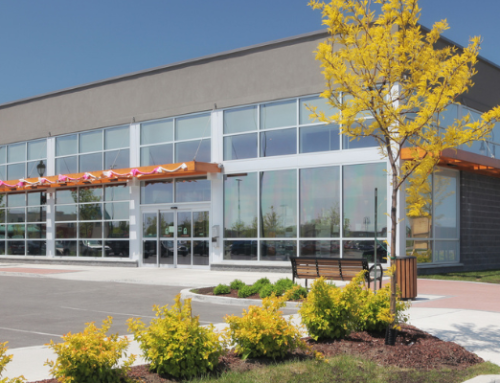The residential housing market has been anything but normal the past two years. A seller’s market, home prices surged while interest rates on mortgages remained at record lows. And though rising interest rates coupled with inflation are slowing down buyer demand, home prices remain high.
In the first few days of November, the Fed raised interest rates by another 75 basis points, marking the fourth time this year rates have gone up. Even though inflation is at its highest level since January 2008, that doesn’t necessarily mean the housing market is in for a crash akin to the Great Recession.
Questions about interest rates continue to impact buyer and investor decisions: wait and see or pursue a mortgage now. Affordability is a big concern. Beyond the short-term considerations, other doubts linger. Builders and contractors are also looking at the impact of interest rates on new construction and multi-family properties.
The Housing Market of 2020 and 2021 … and 2022
The residential housing market pre-pandemic was already tightening. Then, when the Fed cut interest rates to encourage economic activity, more people found themselves able to afford a mortgage. At the same time, new construction slowed – in part because of supply chain issues and labor stoppages due to COVID shutdowns – and more homeowners opted to stay where they were. Available home inventory shrunk even more.
Unusually high buyer demand combined with low inventory caused a spike in home prices during the COVID pandemic. Home prices typically rise about five percent every year; 2020 saw a nine percent increase and 2021, 15 percent.
As of this writing, the average monthly mortgage rate is the highest in 20 years. In January 2022, the 30-year fixed rate mortgage was 3.1 percent; at the beginning of November, it sits around seven percent. Some industry analysts believe the rate for 30-year mortgages could creep up to eight percent before they go back down.
High mortgage rates don’t always correlate to low demand in the housing market. Americans don’t stop buying homes because of higher rates, though demand does shift with the economy. What seems likely is a more balanced demand; inventory will remain low while demand will lessen. For now, it’s still a seller’s market.
Across the country, most regions saw more unsold listings in the past three months. In the Virginia Beach/Norfolk/Newport News area, housing inventory is about 50 percent higher in the past three months. Over the last three years, inventory is still almost 70 percent lower than summer 2019.
The housing market today cannot be compared to the bubble around 2007-08. Lending requirements are much different now than they were in 2006, and lenders are much more aware of homebuyers’ risk profiles. Getting a mortgage is harder. Property values today may be overinflated, but most aren’t to the point that homeowners and investors are likely to go under on their mortgages.
A market correction doesn’t necessarily mean a bust for the housing market. More likely, it’s becoming more sustainable. Most don’t expect new home prices to change much in the next year or so, or if they do, marginally.
Home Improvement Market
New home prices are one thing. What about existing homeowners?
Early in the pandemic, many homeowners pursued home repairs and renovations. The timing was ideal; stay-at-home orders spurred investments in upgrades that would help make the home more livable for more people at one time. Low interest rates made financing these projects relatively affordable.
Now, surveys suggest that 60 percent of homeowners are uncomfortable making large purchases because of rising prices. Almost half of surveyed homeowners felt that inflation was the primary reason behind delaying repairs or home improvements. Considering that home improvement loans tend to have higher interest rates than mortgages, it’s no wonder that these projects are slowing down.
Homeowners with enough equity in their homes may find that a home equity line of credit to finance major home improvements makes more sense than other types of financing in the current market.
New Construction
The cost to build new homes fluctuated during COVID. Ultimately, skyrocketing materials pricing – especially for lumber – caused the price of many new homes to go up by as much as 30 or 40 percent.
And while it may seem that more homes are under construction, that’s mostly due to materials shortages. Delays in everything from cabinets to windows to HVAC systems are keeping more new homes in under construction status than completed. What seems probable is a slow return to homebuilding into 2023.
In 2022, residential housing construction costs remain elevated, while sales of new homes are down about 20 percent. Many builders are slowing down or stopping construction of unsold spec homes. Too much inventory and not enough buyers lead to less competitive returns for home builders. Many homebuilders are bracing for a rough 2023 after working long hours to finish construction for rate locks expiring earlier in the year. Around one-quarter of builders are starting to slash prices on new homes to help buyers offset the rising interest rates.
Other builders are delaying projects altogether. One suggestion for homebuilders is to focus more on smaller, less expensive homes that are affordable to homebuyers who are now grappling with higher mortgage rates. The current reality seems to be that home ownership will decline in the coming quarters.
Multi-Family Construction
Because multi-family property generates cash-flow, it is usually less affected by national interest rates. And while multi-family construction starts have been down, “the number of housing units under construction rose to 1.7 million units for the first time ever,” according to the National Association of Realtors. There are more multi-family units under construction than single-family homes, and demand is still outpacing supply. Landlords and property owners can look forward to the probability of higher rents once more units are completed.
There is still concern in a few areas.
Higher interest rates mean a higher cost of debt capital for investors. In turn, that can drive lower deal volume, prices, and more stringent underwriting as lenders hold back on offering additional leverage. That means investors will need to bring more equity to multi-family construction deals. Cap rates are expected to widen over the next several months.
Overall, rising interest rates are making investors and lenders alike more cautious. More owners may be holding onto their properties for longer than planned, and buyers may need to adjust their expectations for cost of capital and investor returns. On the other hand, owners who need to sell their multi-family properties regardless of the market may need to accept a lower price, according to several industry experts.
There’s more to it than interest rates, though. Investors and owners need to consider the local market, the impact of supply and demand based on their geographical area, and the current financing structure. Currently, a fixed rate loan may yield a better investment than a short-term variable note.
Yet, demand for rental units is expected to remain strong, along with rent. Stable properties probably won’t see as much of an impact as riskier projects. Some investors may also find deals on distressed properties in the coming months, as over-extended owners lose the ability to repay financing.
Looking Ahead to 2023
Though no one can predict the future, least of all in a volatile market, construction and real estate stakeholders can look at the 10-year Treasury yield for insight on mortgage rates and economic sentiment. Rising yields usually indicate higher long-term inflation, and lower yields usually indicate lower inflation and/or a recession or market correction. There are also other factors besides interest rates that can impact construction and real estate: ongoing supply chain issues, new COVID variants, and the war in Ukraine, as just a few examples of potential macroeconomic influences.
Owners and investors can also stay in touch with their advisors, as outside experts can often provide more personalized insight into individual circumstances.
Contact Partner Jennifer French, CPA, for questions about how rising interest rates may affect your construction and real estate projects.





